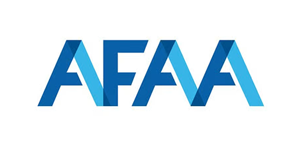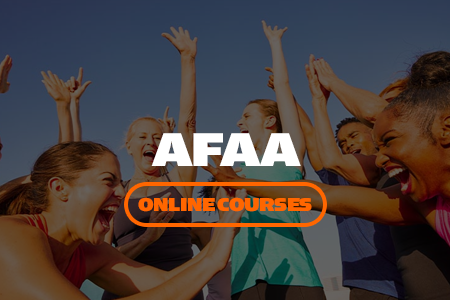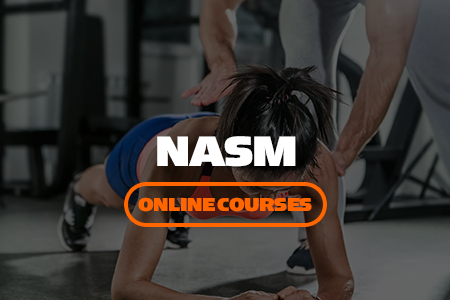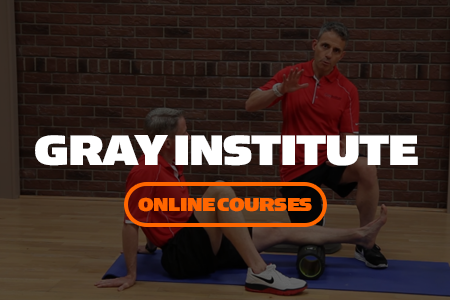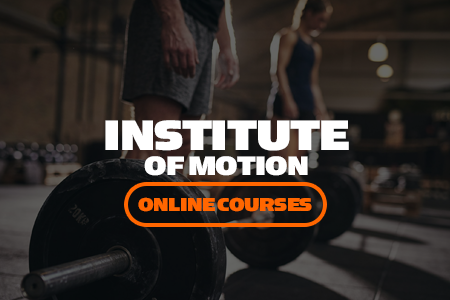As a fitness professional, you know that moving efficiently in activities is key to performance and longevity for you and your participants. In this first release of AFAA’s Sustaining Mobility & Movement series, group exercise instructors and personal trainers learn to uncover dysfunctions in the body’s kinetic chain and the associated movement deficiencies that can lead to poor movement patterns and potential injuries.
When it comes to building a foundation for better movement, it helps to focus from the ground up - literally. In the second piece of the Sustaining Mobility and Movement Series, you’ll get an in-depth understanding of the functional anatomy of the foot, ankle and knee and how to correct the imbalances you see in group fitness settings.
The course includes:
- Online course materials
- Online supporting videos
- Downloadable course modules
- Online activities
- Technique correction exercises
- Practice quizzes
- Final online exam
Course Content:
This course consists of 4 separate modules which discuss applications of injury prevention and corrective exercise for the lower body. For each module, you will complete the reading assignment, watch any assigned videos, complete the interactive activity, and finish with a module quiz on the content you have learned.
- Module 1: Introduction to Movement Science in the Lower Body - It is important to understand injury prevention techniques specific to the different areas of the body in order to most appropriately integrate them into the group setting. Beginning with the lower body, an introduction to human movement and the rationale for preventing injury will be explored. These concepts can then be applied to help ensure safety and effectiveness in any format or workout setting.
- Module 2: Preventing Injuries to the Foot and Ankle Complex - This module explores the functional anatomy of the foot and ankle, as well as common dysfunctions and injuries that can occur there, allowing you to more deeply understand the intricacies of this area of the body with regard to exercise and injury prevention. Additionally, you will learn what to look for when observing class participants, in order to pinpoint compensations that might be affecting them.
- Module 3: Preventing Injuries to the Knee - This module continues the discussions of the previous section, this time exploring dysfunction and common injuries affecting the knee. Given the position of the knee joint within the anatomy of the leg, dysfunctions from the foot and ankle, as well as the LPHC, can cause sub optimal performance and an increased risk of injury to this vital segment of the kinetic chain.
- Module 4: Applications of Injury Prevention in Group Exercise - Now that you have a foundational understanding of the various dysfunctions and common injuries that affect the lower body, as well as the skills to recognize them during observation of class participants, it is now time to put that knowledge into practice. By following the steps of the Corrective Exercise Continuum, you will be able to help class participants move better in and out of the classroom.
Course Objectives:
Upon completion of the AFAA Sustaining Mobility and Movement - Foot, Ankle and Knee, you should be able to:
- Review functional anatomy for the foot, ankle and knee.
- Explain the rationale for injury prevention to the foot, ankle and knee.
- Describe the effect of the foot, ankle, knee dysfunction on the kinetic chain.
- Describe the anatomy of the foot and ankle though static postural assessment.
- Identify dysfunction in the foot and ankle through static postural assessment.
- Describe common injuries and movement dysfunction in the foot and ankle.
- Describe the functional anatomy and kinetic chain interaction of the knee.
- Identify dysfunction in the knee using various postural and movement assessments.
- Apply corrective exercise strategies at the knee.
Exam Format:
- Online multiple choice exam
- 25 questions
- 3 attempts at the exam
- 70% passing score
- 365 days to complete
CEUs: AFAA (7.0) NASM (0.7)
Remarks: All online material can only be accessed using desktop or laptop computer. iPhone, iPad, Windows Phone or Android devices are not supported.
Additional information
| CEUs: | NASM (0.7), AFAA (7.0) |
|---|---|
| Course Format: | Online Self Study |


